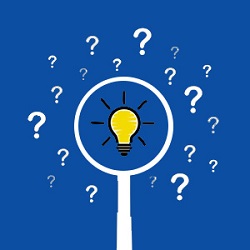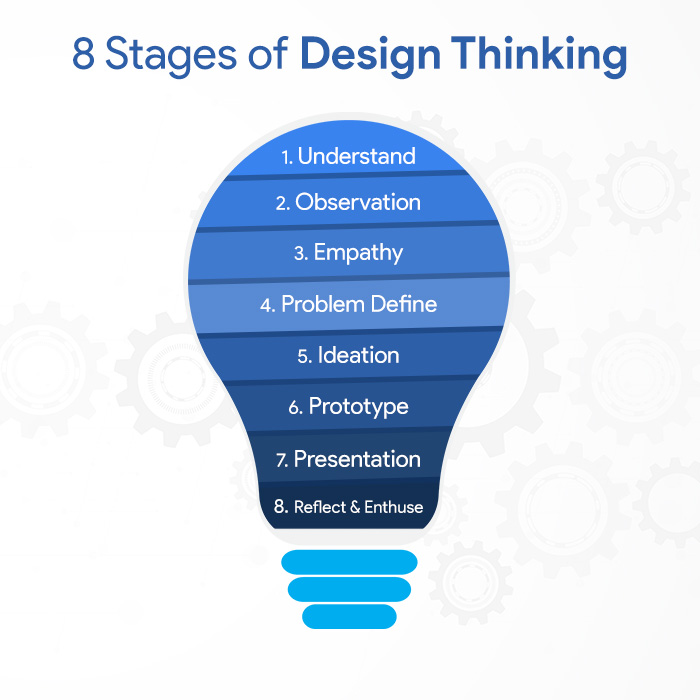It begins by either identifying a problem / possibility e.g. we may address a problem at hand or we may seek out to explore a possibility. Broadly following two stages,
Problems: Products / service not selling, customers buying one product over other, business not expanding, employees productivity is low, employees not satisfied, Merger & Acquisition, Fund Raising, Resource management, Culture, Carbon Footprint, sustainability of business etc.
Possibilities: Scope and Scalability of Business, Entering new markets, new product / service development, transforming employee mindset, creating customer wow, digital transformation, new business model exploration, new technology intervention, best practices being introduced, circular economy etc.
It is a process where individuals with diverse backgrounds come together as a team to solve a problem or pursue a possibility. It’s more of a doing activity i.e. let’s carry out exercises pertaining to different stages of design thinking – generate and learn from the doing experiences. Design Thinking works at all the 3 levels:
1. Skills i.e. using a structured step by step approach, following specific stages, using tools & techniques for each stag
2. Thinking i.e. both creative (lateral, divergent, abductive) and critical (inductive, deductive) thinking. Repetitive analysis and synthesis.
3. Attitude i.e. subjective subtle acts i.e. spending enough time to find or check the hypothesis around problem / possibility, generating as many problems / possibilities and generating multiple scenarios around the same, not jumping to conclusions, not discounting any idea, laying more emphasis upon doing rather theorizing, collaboration and team work, being truly empathetic towards stakeholders.
8 Stages of Design Thinking
Understand : In this stage, we understand the users and their needs. We understand their expectations in relation to the product/ service, challenges and pain-points they face within this context.
Observation: In this stage, we observe and engage with real users, see how they interact with an existing product.
Empathy : As part of this phase one discards his own presumptions in favour of gaining understanding of end users and their requirements. The purpose of the stage is to gather as many experiences, insights, and observations as you can.
Problem Define: Here, we create an actionable design problem statement by implementing methods to synthesize raw data. The problem statement’s objectives are to identify the key problems and to produce feasible solutions.
Ideation: This stage is all about unleashing creativity on intelligence. The idea is to generate a lot of ideas that can be filterd through to find the best, most creative, and most workable solution.
Prototype: In this stage, problem-solving ideas are turned into something tangible which can be tested in solving the problem that one is facing.The objective is to have an actual, visual depiction of the solutions that were considered during the design process.
Presentation: Here, we propose our ideas or solutions that incorporate all significant values that were present throughout the creative prototype designing process.
Reflect & Enthuse : Lastly, depending upon the presentation feedback, we either rework on ideas with a fresh approach, or we motivate decisionmakers to evolve ideas into growth strategies and explain how the proposed idea benefits the stakeholders.
In short, we can say that Design thinking starts with Desirability and ends with Viability:
Desirability: What makes sense to people and for people?
Feasibility: What is technically possible within the foreseeable future?
Viability: What is likely to become part of a sustainable business model?
You’re interested in finding out more information about our Explorra Design Thinking Programs for All Industries, right? Call us right away at +919909206067, or send us an email at hemant.trivedi@explorra.org.




